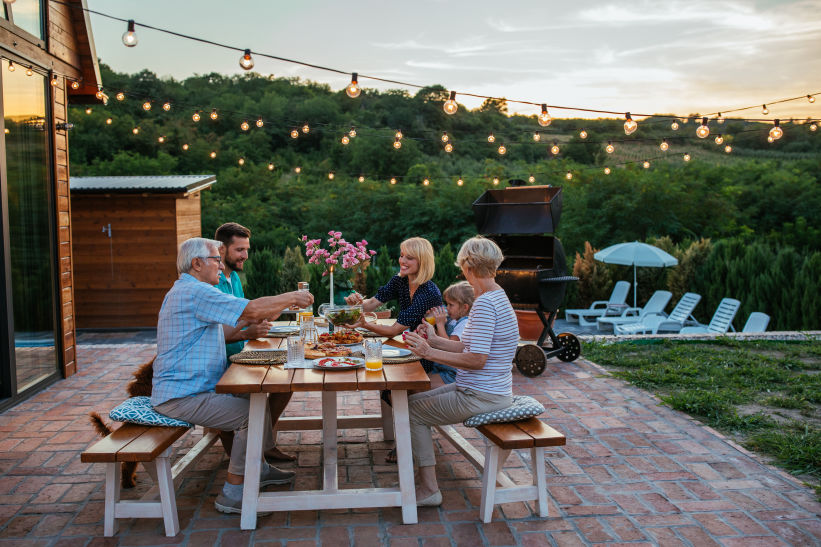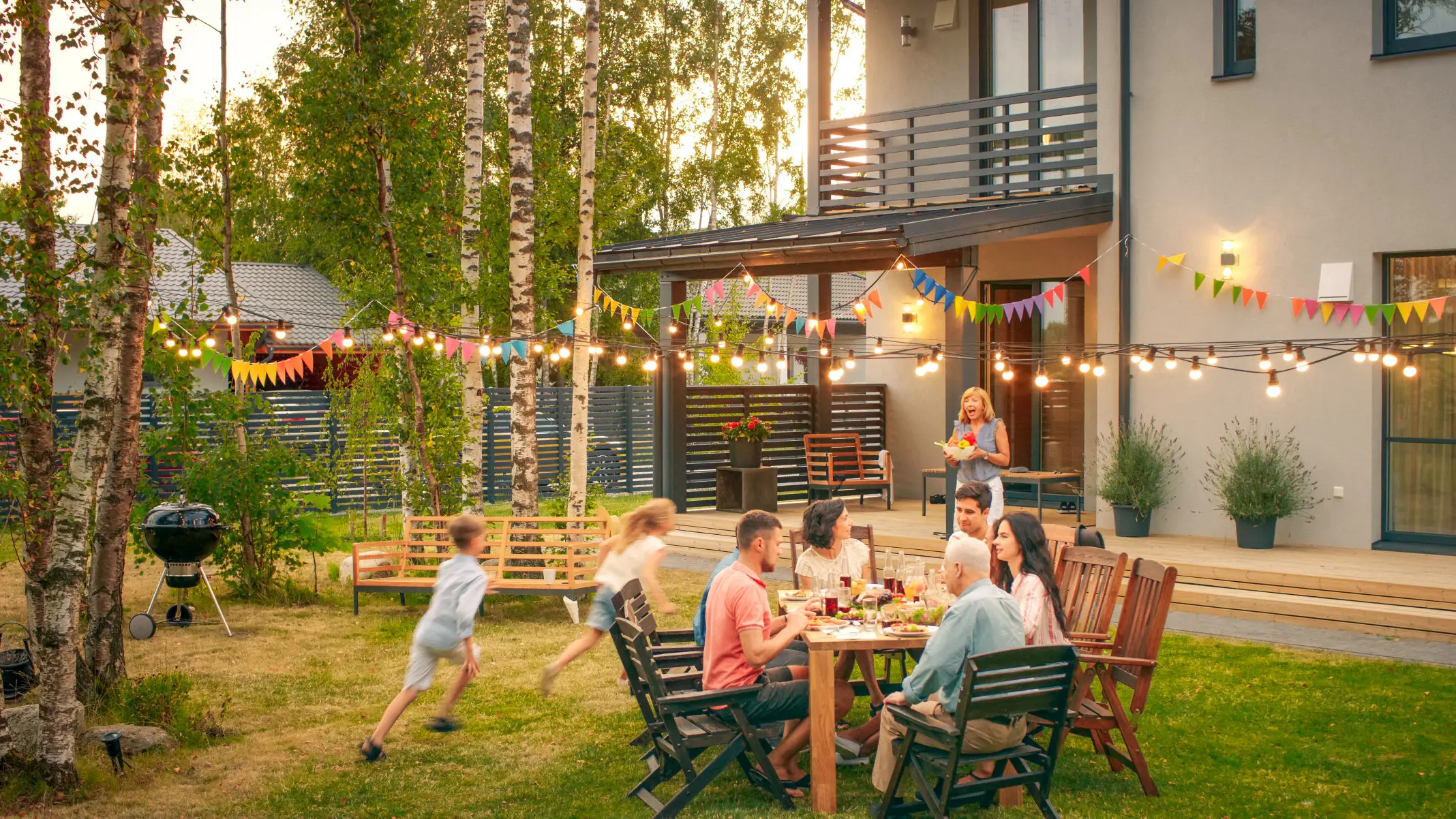


Imagine keeping an additional $50,000–$100,000 annually simply by choosing Temple over Houston, Dallas, or Austin—that’s the reality on a $400,000+ physician salary. With a cost of living 11–14% below the national average, your income becomes true wealth-building power instead of just covering big-city overhead. While colleagues in Austin watch housing consume 30–40% of pay, Temple typically requires only 15–20%, freeing capital for investments, education, travel, and the experiences that make life rewarding.
This isn’t about living cheaply; it’s about living intelligently. Your daily spend is lower across the board—$3.50 coffee instead of $6, fine dining around $40 per person instead of $75, and country club dues that are hundreds, not thousands, per month. Your compensation finally buys the lifestyle you’ve earned—without the financial strain.
Your financial tailwind starts with zero state income tax. On a $400,000+ salary, that’s an annual savings of roughly $20,000–$40,000 versus taxed states. Property taxes (≈1.47% effective) are offset by far lower home prices; on a $400,000 Temple home you’ll pay about $5,880/yr. Local sales tax totals 8.25%—competitive statewide—without the stacked burdens seen in many metros.
Temple’s median home price of $228,916 is roughly half of many Texas metros—so your dream home on acreage at $400,000–$500,000 here could cost $1–$1.5M in Dallas suburbs. A well-qualified buyer’s all-in monthly on a $400,000 home averages about $2,500—near 7.5% of gross income—leaving room to max out savings, invest, and still play big.
Prefer flexibility? Quality rentals in top areas run $1,500–$2,500 monthly (vs. $3,000–$5,000 in Austin/Houston). Strong demand from the medical community and Fort Cavazos families makes investment property compelling.
Groceries trend 6–7% below national averages—about $1,200/mo for a family of four versus $1,400 in major metros. Dining out is 30–40% cheaper, turning great restaurants into a regular pleasure, not a splurge. Commutes average ~16 minutes, saving fuel, time, and sanity—plus cutting annual transportation costs.
To match Temple’s purchasing power, you’d need about $470,000 in Austin, ~$440,000 in Houston, and more in Dallas. Against coastal metros, your $400,000 in Temple feels like $500,000+ in San Francisco, $480,000 in Boston, or $460,000 in Chicago. Same title, same car—very different bank balance.
In Temple, a $400,000+ salary becomes a wealth engine. Max retirement ($23,500 401(k), $7,000 IRA), fund 529s, keep ample cash reserves, and still enjoy premium lifestyle choices—from travel to private school—without strain. Real estate pencils, too: $150,000–$250,000 rentals generating $1,500–$2,000/mo can produce 8–12% returns and long-term passive income.
Bottom line: Temple converts strong compensation into true financial freedom. While big-city peers chase overtime to cover overhead, you’ll reach independence sooner—with the option to scale back, serve, teach, or simply savor the life you’ve built.
Picture yourself cruising through Harker Heights or along the bluffs above Stillhouse Hollow Lake, knowing that on a $400,000+ physician income you can own the executive home that would cost double in Austin or Dallas. Within a 30-minute radius of your Killeen hospital sit some of Central Texas’s most desirable communities—Harker Heights’ new luxury, Belton’s historic charm, Copperas Cove’s affordability, and western Temple’s established estates. With median home prices from $250,000 in Killeen to $336,000 in Harker Heights, you’ll choose based on lifestyle, not limits.
Here, housing costs often consume just 10–15% of monthly income (not 30–40% like big metros). Instead of a cramped tract house, you’re selecting from custom builds on acreage, lakefront properties with private docks, or energy-efficient new construction—all while keeping a 10–30 minute commute (often 10–15 minutes from Harker Heights or NE Killeen).
With ~33,000 residents, low crime, and fast access via Hwy 190, Harker Heights blends small-town calm with big-city convenience. Housing skews newer (post-2000) with open layouts, efficient systems, and luxury finishes. Bella Charca offers gated living ($465k–$600k+), while The Ridge delivers custom homes on half- to multi-acre lots overlooking Stillhouse Hollow—lake views that would cost millions in Austin.
If you want the shortest commute and the most house per dollar, Killeen shines. Near a $248,000 median, options span character homes under $200k to new builds (e.g., Yowell Ranch) from $290k–$400k. Proximity to Fort Cavazos supports reliable rental demand and economic stability—ideal for a live-near-work home now and an investment property later.
On the 30-minute edge (20–25 minutes from western Belton), this university town pairs a restored downtown with modern neighborhoods near Belton Lake. Expect $250k character homes to $500k+ custom estates, highly regarded Belton ISD (Lakewood Elementary, Lake Belton HS), and instant access to Miller Springs Nature Center and lake recreation.
You’ll find top-tier public options across the radius—often eliminating private-school spend. Killeen ISD (B-rated) serves 44k+ students; Harker Heights HS anchors a spirited community. Belton ISD earned multiple Purple Star designations for military families and is expanding via a $173.8M bond. Temple ISD (in western Temple pockets) offers IB K–12 and boasts 200+ National Merit Scholars.
The surge in growth brings semi-custom choices from builders like D.R. Horton and Omega Builders across 1,500–3,000+ sq ft (mid-$200s to $600k+). In Harker Heights, firms such as KS Homes tailor floorplans, finishes, and features—think telemedicine office, extra garage bay, or a mother-in-law suite. Typical build times: 6–9 months, not the year-plus waits in overheated metro markets.
Fort Cavazos’s 35k+ personnel and a growing medical hub create exceptional rental demand. Properties at $150k–$250k often generate $1,500–$2,000/mo with 8–12% annual returns after expenses. Tenants include military families (with housing allowances), traveling nurses, and residents. Local property managers make it truly hands-off.
This market is thoughtful, not frantic (Killeen ~25/100 competitiveness). With 60–70 days on market, you can inspect, negotiate, and secure protections. Experienced agents (e.g., Shine Team Realtors, Keller Williams, RE/MAX) understand clinician schedules. Physician loans (zero down, no PMI, contract-based income) are common; at ~6.5% rates, you’ll qualify easily—often 2–3% under list with contingencies intact.
Living within 30 minutes of Killeen doesn’t mean compromise—it means better homes, safer neighborhoods, strong schools, and faster wealth-building. Whether you choose Harker Heights’ new-luxury vibe, Killeen’s value & convenience, or Belton’s historic charm, you’ll preserve work-life balance and accelerate financial freedom.



Picture yourself walking through Temple’s tree-lined neighborhoods after an evening shift, feeling the same comfort and security you’d expect in a small Texas town—paired with the responsiveness of a fully staffed, well-funded police department. Temple’s crime statistics tell a reassuring story: overall crime 9.5% below the national average, with recent, significant declines in violent offenses. The northwest areas of Temple, where many physicians choose to live, consistently rank among the city’s safest neighborhoods, delivering the suburban tranquility essential for decompressing after intensive hospital shifts.
The city’s safety gains are measurable: a 23% decrease in non-fatal shootings, 10% drop in aggravated assaults, and 29% decrease in robbery cases. In 2025, the Temple Police Department achieved full staffing for the first time in 4.5 years and expanded from an eight- to a ten-district model, improving coverage and response. This is community-focused policing where prevention leads, not a stressed, reactive urban force.
Physician-preferred areas—West Temple, communities near Wildflower Country Club, and developments along the western edge—post crime rates comparable to exclusive gated suburbs in larger metros, without the isolation. In northwest Temple, the annual chance of experiencing crime is just 1 in 65, markedly better than urban counterparts in Houston, Dallas, or Austin. Regular patrols focus on proactive presence along trails, parks, and rec spaces—neighbors look out for one another because community cohesion is the norm.
Baylor Scott & White Medical Center and the Temple Medical and Educational District (TMED) maintain exemplary security: well-lit, monitored parking; escort services for late shifts; and lower incident rates than comparable urban medical centers. Coordinated protocols between hospital security and Temple PD provide layered protection and rapid response, so you can focus on patient care instead of personal safety concerns.
With 158 officers and full staffing achieved in 2025, Temple PD’s ten-district patrol model improves presence and response. The department emphasizes transparency (monthly stats, open forums) and partnership (community tips, school engagement) alongside modern tools—real-time crime analytics and predictive software—combined with classic beat policing.
Expect short, sane commutes (average ~16 minutes) on well-maintained streets with multiple route options. Traffic fatalities remain below state averages; incidents are typically minor. Strict school-zone enforcement protects student walkers and cyclists, and the lack of pervasive gang activity reduces risks like road rage or carjackings seen in some large metros.
Located between Tornado Alley and the Gulf, Temple faces lower tornado exposure than North Texas and no hurricane landfall risk. Proximity to Fort Cavazos strengthens regional emergency response. Upgraded drainage & flood control, mobile alert systems, and coordinated hospital–EMS–city planning keep services operational during crises, complemented by active shooter, hazmat, and pandemic readiness.
Temple and Belton ISDs prioritize student safety with single-point entry, trained school resource officers, and proactive threat assessment—without turning campuses into fortresses. Low youth crime and minimal gang activity allow educators to focus on learning. After-school programs (Ralph Wilson Youth Club, Boys and Girls Clubs, church groups) provide positive outlets that keep students engaged.
In Temple, your $400,000+ physician income doesn’t require gated seclusion. You’ll find declining crime rates, a fully staffed police force, safe neighborhoods, and a culture of community care—so you can focus on practice, family, and quality of life. Safety here is tangible: kids playing at dusk, neighbors walking dogs after dark, and an absence of the ambient fear common in big-city living.
Temple’s security isn’t purchased—it’s lived. It’s the Texas where handshakes matter, your word is your bond, and community pride protects what matters most. That’s real peace of mind.
